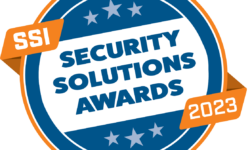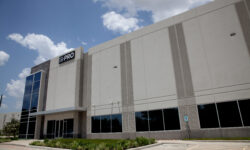How Selling Wellness Solutions Can Offer Your Business a Booster Shot
A recent study illustrates why wellness-related technologies represents a new opportunity for residential security dealers to apply their expertise in this emerging IoT arena.

The converging concepts of the smart home and the IoT are blossoming to fulfill the desires of an increasing number of consumers who place greater emphasis on smart tech to support healthier lifestyles. This trend has only accelerated since the coronavirus pandemic ushered in an era of social distancing and lockdowns, resulting in a renewed focus on the home for many of us.
With a foot solidly in the door already, residential security dealers are well-positioned to play subject-matter expert — and provider — for clients interested in “wellness” as an amenity. Think IoT sensors and products to monitor and purify invisible contaminants, track people’s health autonomously, align circadian rhythms, among other extensive automation, sensing and remote-control capabilities.
Despite rising consumer awareness and technology interest, the wellness market might need a doctor’s visit. In August 2020, in the midst of the COVID pandemic, consumer electronics (CE) integrators reported that they expected more than one-third of their projects over the next 12 months would have some sort of a wellness-related element in them.
Expectations were high. But as the pandemic wanes in much of the country, integrators admit that just 8% of their projects the past 12 months included wellness technologies, be that human-centric lighting (HCL), indoor air quality (IAQ), water quality management, natural soundscaping, motorized shades tied to an astronomic clock, smart sleep tech, digital art, immersive fitness solutions and more.
However, despite the lower-than-expected results this past year regarding the installation of wellness technology, optimism still abounds. CE pros expect the percentage of their wellness-tech installations to nearly double over the next 12 months to 15.5% of all jobs.
Meanwhile, the pandemic remains a strong impetus for wellness deployments — a vibrant opportunity that naturally extends to residential security dealers and commercial systems integrators.
Integrators report their wellness business was spurred by a median of 14% since the coronavirus swept the world. Those are just some of the key results from the 2021 Wellness Deep Dive Study, conducted by SSI sister publication CE Pro. The study aims for the second year in a row to gauge the appetite for wellness technologies among installing contractors and their clients.
The lower deployment of wellness tech compared with the sky-high expectations could be the result of “wellness fatigue” setting in. There is no doubt the term “wellness” is being bandied about like a rubber ball to encompass everything from sexual wellness to eating habits to Leonardo DiCaprio’s Vitamin C-infused water for his shower (yes, that is real).
CE Pro has even written about outdoor “wellness pods” and underground “wellness bunkers” in the past year. A recent Ogilvy Wellness Gap study dubbed the hype as “wellness washing” and noted that 53% of consumers have trouble telling the difference between real and fake wellness claims.
That developing skepticism could be the reason integrators aren’t deploying wellness tech as rapidly as they had anticipated during the pandemic.
Who Wants Wellness?
One interesting aspect of the seemingly ubiquitous nature of wellness is that integrators still report their clients and trade partners are seemingly unaware of how technology can provide wellness solutions. According to the study, awareness levels of the benefits of wellness tech have not substantially increased over the past year.
Exactly two out of every three integrators say the builders, architects and designers they work with, along with their end-user clients, are only “slightly familiar” with the benefits of wellness technology. Moreover, 65% of integrators say they have “never” or only “infrequently” are able to expand the revenue of a project by adding a wellness-tech feature or amenity.
On the positive side, one in four integrators say their clients are well versed in wellness-related technology benefits, and only 9% have said their clients are simply not interested in wellness tech solutions at all.
That lack of awareness is also reflected in the dealers’ general lack of awareness for some of the more specific wellness-related terms and organizations that can be helpful when attempting to educate or sell clients. For example, recognition for Delos DARWIN, the leading wellness technology platform, remains very low.

Indeed, 59% of integrators report they have “never heard of it” while another 12% say they are “vaguely familiar with it.” Delos’ WELL Building Institute and WELL Certification fared better, but not much. Those entities are more familiar to integrators, but still far less than half of dealers say that they are either “pretty familiar” or “very familiar” with them.
Speaking of terminology, one large custom integration company, Bravas, (No. 7 on the 2021 CE Pro 100) has experimented using the various terminology with clients and concluded that the term biophilia does not resonate with customers. According to Nigel Dessau, CEO, the company is no longer using that term with its luxury clientele.
Other entities still lacking recognition among integrators include the Living in Place Institute and its Certified Aging in Place Specialist (CAPS) and Home & Accessibility Trade Specialist (HATS) designations, as well as the term “biophilic design.”
Dealers report only being “vaguely aware” of those. By far the most recognized terminology in the wellness space among CE pros is circadian rhythm lighting/human-centric lighting. More than three out of every four integrators (78%) are familiar with those lighting terms.
Likewise, CE pros believe nearly half of their left-leaning customers (49%) are good candidates for wellness. Also, exactly half (50%) of integrators believe their projects that either have an interior designer as a partner or are design-driven in general have strong potential for wellness.
On the flipside, dealers don’t think wellness is even a good idea to bring up with conservative customers. Just 12% of dealers think right-leaning clients would be open to wellness solutions.
Strongest Categories, Room Locations
Even though wellness adoption is slow, integrators are not sitting around twiddling their thumbs. According to the study, 55% of residential dealers have seen an increase in the amount of indoor air quality systems they have sold as a direct result of the pandemic.
Likewise, installations of motorized shades tied to an astronomic clock to maximize natural light control have also picked up, with 45% of integrators reporting increased sales due to COVID-19.
Other wellness-oriented equipment categories spurred by the coronavirus include HCL (44% of dealers reporting an uptick), immersive home fitness (33%) and central vacuum/IAQ systems (35%).
Outdoor entertainment, water quality monitoring and sleep-related tech were also elevated during the 15 months of lockdowns preceding the study.
While the overall increase in wellness-centered tech installations was just 8%, some integrators reported tremendous jumps during the past year. Nearly 23% of dealers had a spike of more than 50% in their wellness projects, with 5% even seeing a nearly doubling of their wellness business.
Top 10 Most Frequently Installed Wellness Technologies
1. Indoor air quality sensors/filters
2. Motorized shade control tied to astronomic timers
3. Human-centric lighting control and fixtures
4. Indoor air quality/central vacuum
5. Immersive/integrated home fitness gear
6. Water quality monitoring systems
7. Nature-related audio/soundscaping
8. Aroma infusers
9. Smart sleep technology
10. Nature-related visuals/digital art
Indoor air quality (IAQ) monitoring systems surged to the top as the most-installed wellness technology over the past 12 months. Last year, it was the sixth-most-installed technology.
For the second half of 2021 and into next year, nearly one in three respondents expected a 50% rise in the number of wellness projects, with 10% anticipating to as much as double their wellness revenues. One surprising piece of data from the research was the shift in room locations for wellness technology.
In the prior 2020 survey, integrators by far cited the kitchen as the key room of the home where they expected to deploy wellness solutions. This year, the home office leaped to the top of the list, surpassing not only the kitchen, but also the great room and master suite as the most likely area for wellness.
However, there is a bit of a dullness to that shine. In the 2020 survey, kitchens, great rooms and master suites were all ranked as having between “good potential” and “high potential” for wellness.
This year, not a single room of the home ranked that high. Indeed, home offices were rated the highest and they fell between “medium poten3tial” and “good potential.” On a positive note, CE pros expect to see more whole-house wellness solutions adopted, bringing HCL and other elements throughout the home versus having it isolated in a single area.
Integrators are also taking action to elevate their wellness business. In total, 59% of dealers expect to add wellness-related information to their sales and marketing presentations and websites. Also, 55% report they are ready for some level of wellness training, while nearly half (46%) are prepared to learn more and pursue a wellness strategy for their business.
Other actions that many integrators plan to take include incorporating wellness into their showroom, attend webinars on the subject and explore new vendor opportunities in the space. Few dealers are ready to commit to adding payroll for wellness just yet, with only 16% of dealers saying they would (or already have) hired someone as a wellness specialist for their company.
To reach wellness nirvana, dealers say they need help from suppliers, with 71% asking for more education on the topic, 60% looking for manufacturers to elevate awareness among end users, and 56% wanting marketing support literature or information. Other desires include margin on wellness products, end-user referrals from suppliers, and available product targeted at the custom installation channel.
If you enjoyed this article and want to receive more valuable industry content like this, click here to sign up for our FREE digital newsletters!

Security Is Our Business, Too
For professionals who recommend, buy and install all types of electronic security equipment, a free subscription to Commercial Integrator + Security Sales & Integration is like having a consultant on call. You’ll find an ideal balance of technology and business coverage, with installation tips and techniques for products and updates on how to add to your bottom line.
A FREE subscription to the top resource for security and integration industry will prove to be invaluable.








